Formula Ford Chassis Fundamentals
The Formula Ford small-tube space frame chassis is a very basic, simple and well proven type of chassis. It is inexpensive to manufacture and relatively easy to repair when damaged. The earliest space frame designs for racing cars were developed by Cooper, Mercedes Benz in 1954 for its world-beating W196 F1 car. Space frame chassis design was then refined by Colin Chapman when he penned the chassis for the 1958 Vanwall F1 car. The original Lotus F3 chassis design of 1957 was adapted for the first batch of FF cars in late 1958 powered by the Cortina GT engine.
These chassis were typically made with mild steel round and square tubing with four longitudinal members and a number of shorter members running between them with extensive triangulation. These tubes were generally brazed together but later, tig and mig welding became the norm. Chassis strength and torsional rigidity relied on triangulation, small gusset plates and a rigid belly pan riveted to the underside of lower members.
Early FF chassis had far less strength and rigidity than more current designs as can be seen in the accompanying photos. Some particular chassis were known for lightness and as a result, the extent of rigidity and degree of protection they offered was minimal. A good example would be the Lola 342, the upper rails of which were made from light gage sheet metal! In the US, "strengthened" Lolas performed better due to greater torsional rigidity which increased the tires' grip and allowed the suspension to act more effectively. Late seventies cars were far stronger in every area. Two good examples would be the Zink Z10 - known for its robustness - and the Crossle 32/35 series. Cars built from the early 80's on - and certainly all current chassis - have far more sophisticated designs with more members in key locations and much more triangulation.
Driver protection and torsional rigidity became major design criteria in cars like the Swift - designed in 1982 - Reynard and Van Diemen. The Swift chassis utilized stronger chrome moly tubing and its design was revolutionary in many ways. It was the first to maximize strength and driver safety by having an assembly of tubes which virtually enclosed the cockpit including tubes placed above the driver's shoulders connecting the main hoop with the dash hoop.
Formula Ford chassis protect the driver in various ways and to varying degrees depending on a broad rage of factors: overall configuration of the particular design, the vintage of the design, the number, size and location of the tubes as well as the quality of the materials and welds. Age and the modifications that may have been done to it over time will affect its condition and strength. During the first decade of the class, many of the cars used the longitudinal chassis tubes to transfer water from engine to front mounted radiators. Over time, corrosion and deterioration of these tubes can significantly reduce their strength and, where possible, they should be replaced entirely.
A lightweight formula car is meant to be rigid but it is also designed to absorb crash energy by means of "local-deformation" when a car hits a solid, relatively immovable object. In cases where there is suspension impact, cars are designed with tabs or shear plates so that components can tear off without inflicting major damage to the chassis itself. As a consequence, current designs offer a high degree of protection under the kinds of crash conditions which can occur because crash energy is absorbed by progressive deformation and because the driver's compartment is now so strongly enclosed.
Anyone purchasing an older Formula Ford should minimize the level of risk by selecting a chassis design known for its strength or by engaging a qualified race prep shop and incorporating additional braces. First, check to be sure everything is still in place as it was manufactured and check the condition of the chassis. In some cases, additional members can be added and there are chassis specialists and prep shops that are well equipped and have experience with such modifications. Older cars may also require new front roll hoops and new main roll hoops to meet current regulations. (See: Buying a Used Formula Ford)
Chassis Design and Construction
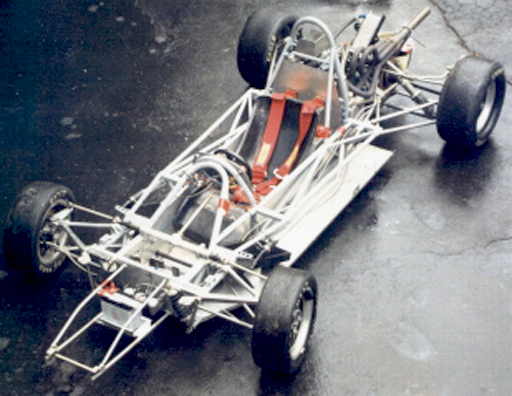
The chassis of the Citation-Zink Z16 - a Zink/Lathrop creation - is a good example of the generation of chassis designs from about 1978 up through 1983 which had additional triangulation, stout front roll hoops and additional side protection for the driver. The Ed Zink design featured three top-to-bottom hoops and a removable rear subframe for the engine/transmission combo. At the time the design was unique for having no fixed chassis members aft of the main hoop.
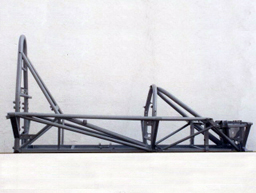 |
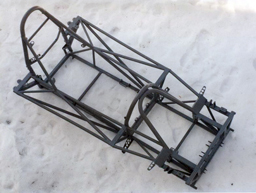 |
The next generation of cars is symbolized by the Swift DB1 which had high side cockpit bars and a far greater degree of torsional stiffness. Designed and built in California in 1982-83, it was a radical departure from all previous Formula Ford chassis designs, incorporating very extensive triangulation and upper bars at the cockpit - in a very narrow configuration. The radiator was positioned behind the main roll bar which pushed the driver forward. An ingeniously designed cast aluminum bell housing contained the oil sump tank and the rear spring/shock assemblies. The David Bruns design was the ultimate optimization of the FF1600 chassis rules and changed Formula Ford forever.
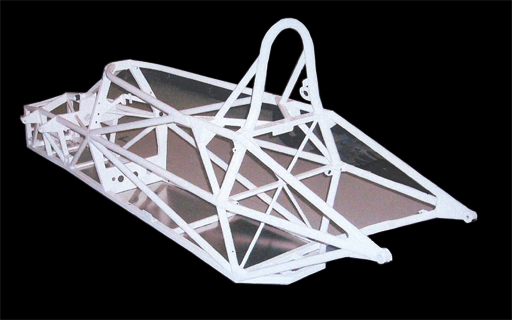
| This detail of a mid-1990's Van Diemen chassis shows the extent of diagonal bracing from just in front of the dashboard toward the front. Because this design incorporated the shocks and springs located in the area above the driver's knees, extensive bracing achieved the maximum torsional rigidity of the chassis and also assured that there was no compliance in the suspension components. | 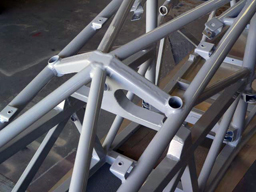 |
Ready to do a frame-up rebuild?